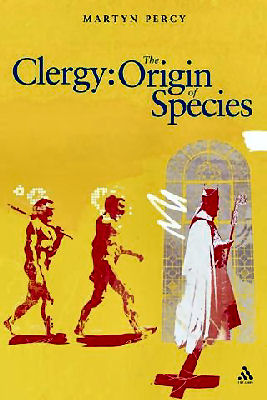
|
Posted September 26, 2007
Book: Clergy: The Origin of Species Author: Martyn Percy Continuum. New York. 2006. Pp. 205 An Excerpt from the Jacket:
This is an astute study of professional and ministerial identity that will have implications for anyone interested in cultural studies, social theory, pastoral studies, practical theology and religious studies. Martyn Percy provides an entertaining yet informed and serious treatment of the role of the clergy past and present. An Excerpt from the book: No matter what authority-type a clergyperson thinks they represent, and no matter how much that is based upon their own reading of tradition, the very nature of equitable power relations in social and ecological environs will stipulate that ministry and clerical identity must adapt to the temporal conditions in which it finds itself. Malcolm Torry, noting these difficulties writes: We thus find a complex picture. Clergy are intimately bound up with their congregations, but their distinctive position within a variety of faith, authority and compliance structures gives them distinctive roles and imposes on them distinctive pressures. Amongst those pressures is being accountable to a very broad range of individuals and institutions: the donomination, a particular theological tradition, normative texts, hierarchical authority-structures, congregational office-holders, congregational members, civic leaders, civil institutions, local residents – and God. We are once again drawn to clerical identity and roles, and their deep complexity. And on the basis of what we have deduced in preceding chapters, we can now see that their environment only permits priests or clergy, as a caste, to be partially professionalized. Moreover, this professionalization is also diverse; the increasing numbers of non-stipendiary clergy are both a symptom and a cause of the reduced social status of clergy. Granted, clergy could, in one sense, be seen as the very first professionals: there was a time when they were the only people of learning in a given community. But as science, education and society have advanced, and as secularization has increased, clergy have found themselves increasingly forced into more compresses roles. The specialization that begins to emerge under such conditions has a peculiar pharmacological quality. On the one hand, clergy become distinctive purveyors of skills, rituals and knowledge. When gathering together as an exclusive group, for example, clergy often find that the subject quickly turns to funerals, or to other pastoral situations that have been acutely intense and demanding. Such conversations confirm the validity of the role in a way that a conversation about preaching, administration or visiting may not — because others can do these things. The tasks are not reserved to the clerical office. At the same time, however, such specialization needs congregational support, and this requires payment, accountability, rationalization and relationships, which erode the autonomy of the minister, and increase the power of the laity. Clergy, therefore, find that the evolution of their praxis now begins to emerge ouit of a complex matrix of power relations, together with a myriad of assumptions about the nature of power itself. Power in religious institutions can be as inevitable and ubiquitous as anywhere else. It can be the power of virtue or vice. Equally, it can be a power that drives a morally ambiguous potency, or the naked assertion of a particular fecundity. Power can be seen gorgeously vested; splendidly arrayed in ritual, material and organization. But it can also be disguised in the apparently ordinary and insignificant, only erupting as problematic when a synergy of events causes the hidden face of power to be revealed. An understanding of power, then, is a crucial hermeneutical key for arriving at an understanding of clerical identity of the local church, and in specific relation to congregations. Table of Contents: 1. On reflection 2. On origins 3. On development 4. On praxis 5. On survival 6. On ministry Coda |
|
